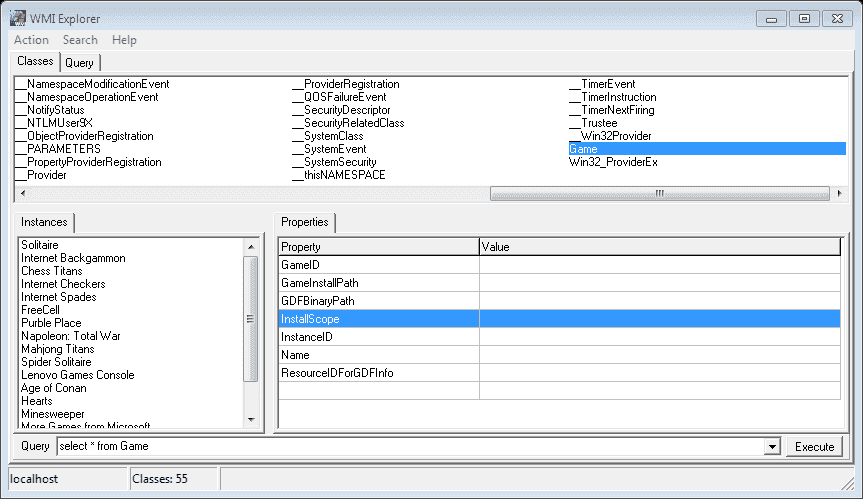


Take note that as we iterate over each instance of SMS_AuthorizationList, we are redefining the $UpdateList variable by retrieving a direct reference to the instance. Here is a sample script that retrieves all instances of the SMS_AuthorizationList class, that we examined above. PowerShell Code – Retrieving a Lazy Property You’re still ok to enumerate WMI instances using the SwbemServices.ExecQuery() COM interface in VBscript & PowerShell, or Get-WmiObject in PowerShell, but when you’re iterating over each instance, you must get a second, explicit reference to the WMI instance you’re wanting to work with. The key thing to remember with lazy properties is that you have to get a reference to each WMI instance (aka. Getting values from lazy properties takes just a couple extra steps than normally working with WMI objects. Ok, so how do I get values from Lazy Properties? This is just one example, and there are many more properties just like this one. We can see that the property named “ Updates” on this class is marked as lazy. Instances of the SMS_AuthorizationList class represent Update List objects in ConfigMgr Software Updates. Here is a screenshot of WbemTest (WMI utility built into Windows), browsing the class definition of root\sms\site_xyz:SMS_AuthorizationList. Run a PowerShell script against the ConfigMgr namespace and look for property definitions with the lazy qualifier - read the last section of this article.wbemtest, SAPIEN WMI Explorer, CIM Studio, etc.) You find a property marked with the lazy WMI qualifier using a WMI browsing tool (eg.You’re not getting data back that you’d expect to when querying a ConfigMgr WMI class.There are a couple different ways you’ll know that you’re dealing with a lazy property: Now that you know what lazy properties are, you are probably wondering how you’re supposed to know whether or not you have to design your code around lazy properties. They introduced lazy properties as a method of providing only (what they deemed) “essential information” unless the script/software developer specifically requested more information. Lazy properties are certain (not all) properties on certain (not all) WMI classes, within the ConfigMgr provider namespace, that are marked with a WMI qualifier denoting the property as “lazy.” That was quite a mouthful! What exactly does this mean? Why are certain properties LAZY? Well, during the development of ConfigMgr, Microsoft realized that the enumeration of some information from the ConfigMgr provider could result in a high load on the server where the provider is installed.

So if you’re a script writer, and you also use System Center Configuration Manager 2007 (ConfigMgr), you may have run into a concept called Lazy Properties.


 0 kommentar(er)
0 kommentar(er)
